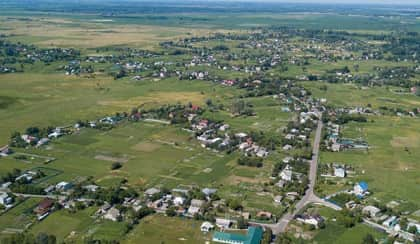New markets rise amid regional-city convergence
Fresh opportunities are emerging for investors as traditional regional hotspots lose steam while previously overlooked towns gain momentum, John McGrath has said.

According to real estate expert John McGrath, Australia’s regional property markets are starting to mirror the capital cities, with growth slowing in traditional hotspots while momentum builds in previously quieter areas.
“It’s not just Australia’s capital cities that are undergoing a property market rebalance,” McGrath said.
“In a convergence of suburban areas and regional towns, we’re seeing the latter experiencing performance moderations very similar to capital cities.”
McGrath said that the narrowing value gap between capital cities and regional areas has accelerated since January.
Recent data from Cotality showed that July was the first time in nine months where regional areas’ quarterly value increases were the same as capital cities, remaining at 1.7 per cent.
“This year’s interest rate cuts have also altered recent performance growth in our regional centres,” he said.
Cotality data showed that capital cities were more responsive to the RBA’s February rate cut with a 1.1 per cent growth to 31 January, compared to 0.5 per cent in major regional areas.
“Values and growth in regional centres are shifting and changing towards a new property cycle that is already increasingly apparent in our cities and suburbs,” McGrath said.
“Rate cuts will likely mean further shifts in our regional values and performances.”
Despite growth values narrowing, McGrath said that regional centres remain valuable investment opportunities, as combined regional areas’ dwelling value rose by nearly 6 per cent over the last 12 months compared to 3 per cent in capital cities.
“Regional centres still have plenty to offer buyers in performance growth, like rental increases, especially when it comes to annual uplifts.”
Additionally, he said that the 50 largest regional urban areas have continued to outperform capital cities, posting 1.5 per cent growth in the April quarter compared to 1 per cent across the capitals.
Cotality data showed strong activity in Western Australian markets, with Geraldton home values increasing by 26.9 per cent and Albany rents rising by 13 per cent over the past 12 months.
Meanwhile, Rockhampton properties have been selling in just 11 days, and Shepparton–Mooroopna is experiencing a 30.3 per cent jump in annual sales.
However, McGrath said that despite Australians increasingly moving from cities to regions, dwelling growth remained uneven, with regional NSW among the slowest-growing areas nationwide.
“Overall, the demand for regional properties remains positive with this data presenting new opportunities for regional buyers, especially investors.”
“We are also on the verge of another busy spring period, so it will be interesting to see what the next few months will bring to both regional and capital city property markets,” McGrath concluded.

